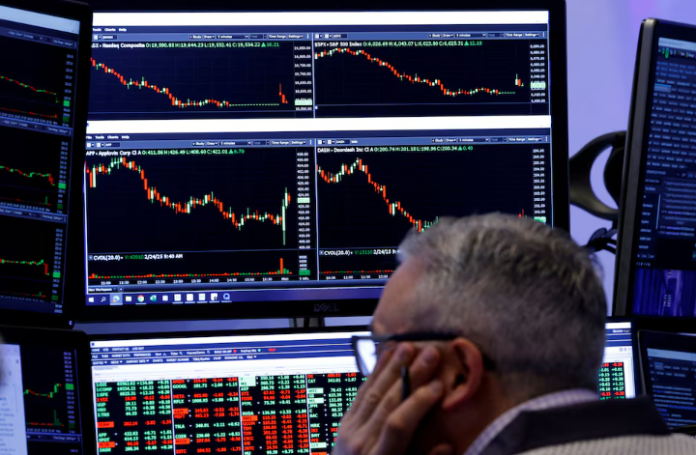After a dramatic plunge, global stock markets are showing signs of stabilization. Following Monday’s steep losses—where the Nasdaq suffered its worst one-day decline in over two years—investors appear to be regaining confidence. But is this recovery sustainable, or just a temporary pause before more volatility?
Markets Show Signs of Recovery
Tuesday morning brought a measure of calm to the financial world. Europe’s Stoxx 600 index remained flat, while U.S. stock futures edged up by 0.3%. Asian stocks, which had initially dropped 1.75%, managed to cut their losses, ending the session only 0.5% lower.
This turnaround contrasts sharply with Monday’s chaos. The Nasdaq plunged 4%, and the S&P 500 tumbled 2.7%, marking their worst performances in months. The sell-off was largely triggered by former President Donald Trump’s remarks in a Fox News interview, where he acknowledged the possibility of a “period of transition” and did not rule out a recession. This statement intensified fears of an economic slowdown, leading to a massive market retreat.
Investor Sentiment and Safe-Haven Rush
Despite today’s relative stability, investors remain on edge. Prashant Newnaha, a senior Asia-Pacific rates strategist at TD Securities, noted that markets have now accepted the idea that the U.S. administration is determined to push through economic policies—such as tariffs—even if it risks a short-term recession.
As uncertainty looms, investors have flocked to safer assets. U.S. Treasury yields fell sharply, with the benchmark 10-year note dropping by 10 basis points on Monday—its biggest daily move in nearly a month. It continued to decline on Tuesday, falling another 2 basis points to 4.12%. Meanwhile, the yield on the two-year Treasury note, closely tied to interest rate expectations, hit a five-month low at 3.88%.
What’s Next for the Fed?
The market is now anticipating a more aggressive response from the Federal Reserve. Traders are pricing in 85 basis points of rate cuts this year, up from 75 basis points just a day earlier. This shift suggests growing confidence that slowing economic growth will force the Fed’s hand.
However, Wednesday’s U.S. consumer price index (CPI) report could change the outlook. A hotter-than-expected inflation reading could derail expectations of rate cuts and reignite market turbulence. February’s CPI is projected to rise by 0.3%, following January’s unexpected 0.5% surge—the biggest monthly gain since August 2023.
Currency and Commodities Reaction

Currency markets reflected continued caution. The Japanese yen strengthened, reaching a five-month high before pulling back to trade flat at 147.2 per dollar. Despite this dip, the yen has gained 7% against the dollar so far in 2025. The euro also saw an uptick, climbing 0.6% to $1.109.
In the commodities sector, oil prices held steady, as traders weighed concerns that U.S. tariffs could slow global economic growth and dampen energy demand. Meanwhile, gold prices climbed 0.7% to $2,908 per ounce, inching closer to last month’s record high. The precious metal has surged 10% in 2025, following a 27% jump in 2024, as investors continue to seek shelter from economic uncertainty.
Final Thoughts
While today’s market movements suggest a return to stability, investors remain wary. The coming days—especially the release of inflation data—will be crucial in determining whether this is a true recovery or just a temporary pause before another downturn.
Is the worst over, or is more volatility ahead? Stay tuned for further updates as the market navigates these uncertain times.



